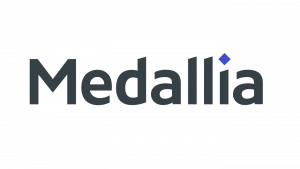If you want to get to the root of what’s stopping you from truly connecting with your people, you have to get introspective. Sometimes one of the biggest blockers can be personal and organizational assumptions about how your employees feel, why they feel that way and how best to move forward.
“We can be very selfish,” said Lora Allen, a former federal recruiter who now serves as a Principal CX Advisor for Public Sector at Medallia. “We’re very outcome-based in government; we’re all about the results and building the business case. We can often forget about the person and their experiences, what they need to be successful in a remote environment, to onboard in a new organization or to deal with workplace stresses.”
When we pause to listen more deeply to our employees, we begin to see that our employees can teach us how to get better at serving our customers too.
Even misunderstandings or lack of clarity around who “owns” the employee experience can be a barrier, said Lee Becker, Vice President of Regulated Industries and Public Sector at Medallia. Although the way employees experience work is a culmination of small moments, organizations often fail to step back and view those moments collectively as a connected cycle.
What agencies are left with is a partial view of what their employees are actually going through and what support they need, said Becker, who spent more than a decade working to improve how veterans receive care and interact with the government.
Much of the workforce is on the frontlines, whether at the border, assisting in the COVID-19 response or providing a host of other public-facing services. They’re working long hours and, in some cases, placed at risk when they serve. But their sentiments and experiences aren’t regularly captured and factored into ongoing decision-making.
“There is a fundamental capability that’s missing within agencies right now,” said Becker. “And it’s that ability of being able to truly listen continuously across every moment that matters to their employees.”
Sometimes the survey fatigue myth can overshadow opportunities to create that continuous feedback loop between leadership and employees. What this does is minimize the frequency and ways that you have to learn from your people. If agencies thought this was a challenge pre-COVID-19, they’ll have found it’s even harder in a hybrid environment — but not impossible.
The Solution: Continuous Listening and Co-Creation
Your employees are constantly signaling how they feel on the job, what their challenges are and how they can be better supported — all without responding to a single survey prompt.
The question becomes: How are you continuously listening, understanding and responding to the indicators that employees are sharing? Do you have a way of capturing and measuring those signals, which could include help desk tickets, customer comments, meeting attendance and, yes, direct surveys?
“Employees want to share feedback on their own terms,” Allen said. “Feedback analysis gives agencies a window into the moments that matter most to employees and the ability to monitor and track those sentiments over time.”
This can only happen when co-creation is a priority. Don’t just stop with feedback. Actually use those insights to shape policies and programs, and then show employees that you’re listening by turning their insights into actions. That not only boosts morale and engagement, but it also builds trust.
Employees can take ownership of their experience when they feel seen and heard, Becker said. It comes back to a term we highlighted in the introduction: operationalizing empathy.
“It’s easier said than done, but it means that you have this ability to continuously listen, to continuously understand and continuously make sure you’re there for your employees, and they feel that you trust them,” he said.
This article is an excerpt from GovLoop’s recent report, “How to Activate the Untapped Insights of Your Workforce.” Download the full report here.






Leave a Reply
You must be logged in to post a comment.